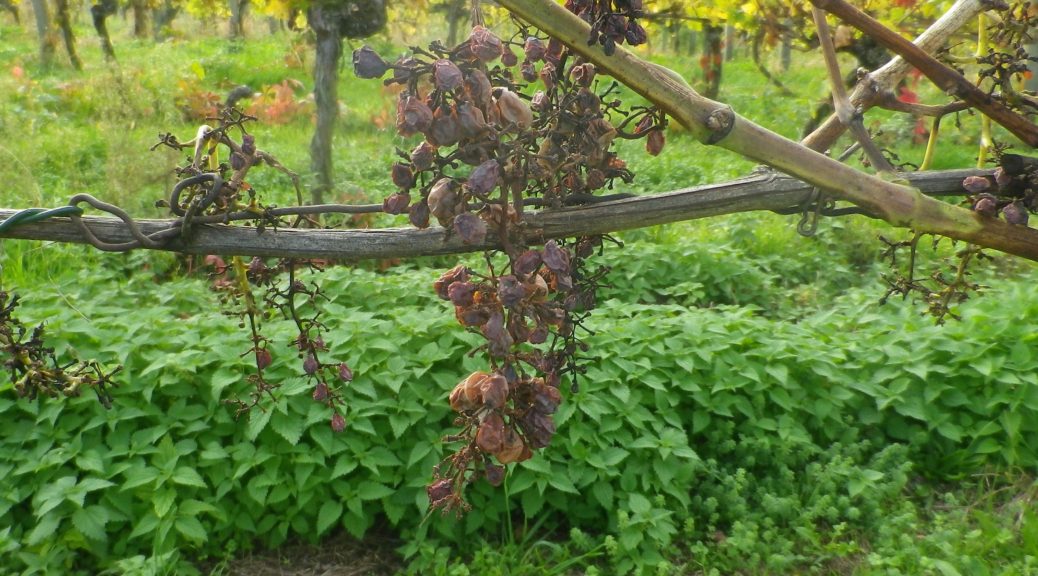What I Learned:
The Breisgau district in Germany’s Baden Wine Region has some unique topography, both manmade as well as natural. From the ancient Rhine River floodplain, you see ridgeline after ridgeline, each rising higher as it moves away from the Rhine, and toward the upper reaches of the Black Forest to the east.
The vine-covered hills, usually on the first or second ridgelines after the plain, tend to be small, but steep. Vintners have terraced many of them over time. The terraced banks provide plenty of opportunity to notice the primarily loess and sandy soils that predominate in this district.
Just south of this circuit, in vineyards near Mundingen, archeological finds attest to winemaking taking place on the left bank of the Rhine beginning in Roman times. (These sources identify areas in Alsace and the Pfalz.) On the right bank of the Rhine, winemaking can be definitively dated to the Carolingian era, around 781 A.D., in the Kaiserstuhl.
In the Breisgau, the first written mention of vineyards in nearby Koendringen (further east from the Rhine than the Kaiserstuhl district), dates to 1307, although it may be supposed that it actually occurred earlier.
In other places in the Breisgau though, viticulture is fairly recent. In Glottertal, a sign on the Rebhaeusle, an historic vintner’s hut on the Breisgauer Weinweg trail, notes that the first vineyards in the valley date from 1868.
This district produces red and white wines. Mueller-Thurgau is the most planted white varietal, followed by Rulaender (Grauer Burgunder/Pinot Gris), and then Pinot Blanc. The Pinot (Burgunder) varietals are widely planted here. In fact, according to the Weinlandbreisgau.de site, the Blauer Spaetburgunder (Pinot Noir) constitutes a whopping 42.9% of all wine made in the Breisgau. Combined with the Pinot Blanc figure of 9.5% and the Pinot Gris figure of 12%, this means that the Pinots themselves constitute over 60% of all wine from this area. Not surprising considering that France is less than 30 minutes from here.
Most planted varietal in the Breisgau area around Kippenheim is the Spaetburgunder. Other areas within the Breisgau grow the red varietals of Regent (developed in 1967 in the neighboring Pfalz wine region) and Cabernet Mitos, and Riesling and Chardonnay as other white varietals. All other grapes grown constitute less than one per cent of the total.
What I Tasted:
2018 Gutedel, Qualitaetswein, Trocken, Staatweingut Freiburg (Freiburg): A dry white wine with medium minus gold color; mineral and slight floral nose, with slight toasted nuts and fruity flavors; medium acidity.
2018 Sauvignon Blanc, Ettenheimer Kaiserberg, Deutscher Qualitaetswein, Trocken, Wein und Sektgut Weber (Ettenheim): A dry white wine with medium gold color; nose of gooseberry and citrus, with gooseberry, citrus and slight spice and pear flavors; medium plus acidity, with a tart finish, well balanced and a great representative of this varietal wine.
2016 Grauburgunder, Blankenhornsberger Doktorgarten, VDP Grosse Lage, Trocken, Staatweingut Freiburg (Freiburg): A dry white wine with medium minus gold color, mineral and sweet floral nose, with white stone fruit, vanilla and floral flavors; medium plus acidity, but a very smooth finish with lingering complex flavors.
2016 Solaris, Auslese, Lieblich, Staatweingut Freiburg (Freiburg): A sweet white wine, with medium gold color; mineral, honey and floral nose, with floral, exotic fruits and bergamot flavors; low acidity.
